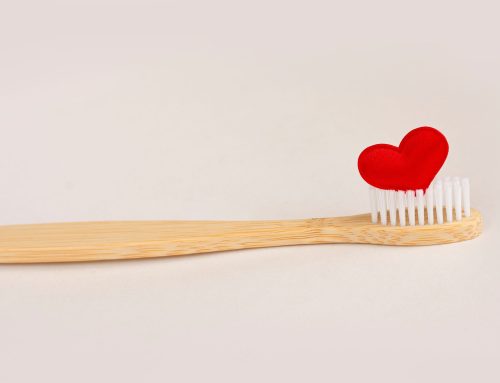Overwhelmed? 5 Ways to Find Peace in Less Than 5 Minutes…
I’m not sure if you are like me, however, I can’t keep track of how many times a day I have so many thoughts popping into my head of things to do, people to call, groceries to buy, e-mails to send, clothes to wash, dishes to clean…you get the point! All of these daily thoughts that come in and out of our brains on a daily basis can send us into overdrive and make us feel overwhelmed and often anxious about our lives. I am a follower of Oprah and faithfully read her magazine. Often times I come across articles that help me find easy ways to relieve these feelings and many other stresses that I come in contact with in daily life.
October 2013 issue of O Magazine had an especially interesting article that helped me put all of these overwhelming factors into perspective, and 5 easy ways to find peace in less than 5 minutes! I wanted to share these interesting tactics with you:
1. During Rush Hour: Pop a peppermint – What helps a frustrated, worn-out driver (besides vanishing traffic?) Researchers at Wheeling Jesuit University in West Virginia found that pumping peppermint-scented air into the cars of ticked-off commuters helped decrease their anxiety and fatigue. Stash a bag of peppermint candies in your glove compartment to help you keep your cool in honking traffic or during a hectic commute.
I have found this useful in more ways than just in the car. Being a dentist, I often times will have more than 1 place I need to be at a time. Nothing makes me more anxious than knowing people are waiting on me. Therefore, I keep a stash of peppermints at my office to help! Try it in one of your stressful and anxious daily moments! It works!
2. While Trying to Get Dinner on the Table: Stop Listening to the 6 p.m News…at 6 p.m.
The oil in your wok has started to smoke, your dog is barking to go out, the vegetables you were planning to stir-fry are too old to be edible—and Brian Williams has nothing but bad news. It’s important to stay on top of current events, but you’re not helping anyone by catching up during one of the most frantic times of your day—least of all, yourself. Exposure to media coverage of upsetting events can not only spike stress levels, but it can also make you feel worse physically, found a 2012 Israeli study that assessed 55 chronic-pain patients before and after a local three-week missile attack. Participants who watched more television reports of the attack said that their stress was more acute and their pain felt more intense. Your best bet: DVR the news to watch when the kitchen’s closed for the night and every last fork has been washed and put away.
I can’t count the number of times I have been trying to get dinner ready for my daughters at a reasonable time and been caught listening to the evening news. Trying to do both at the same times often ends up with me getting frustrated with dinner or worse my lovely daughters, when my focus should be 100% on them. I have set my recorder to capture the news each day and if time permits I will catch up on it once the girls have gone to bed. I find that I don’t watch as often and know just enough to keep me from getting too anxious regarding all the worlds unsettling situations.
3. As You Stare Down 3,572* Unread Emails: Remember to Breathe
A few years ago, Linda Stone, a high-tech exec-turned-adviser and consultant, noticed that she was holding her breath whenever she sat down at her computer. She observed more than 200 people using computers and smartphones and found that the vast majority of them were doing the same thing—forgetting to inhale (or taking shallow breaths) after logging on. Stone, who calls this phenomenon “screen apnea,” says it can trigger the body’s fight-or-flight response, increase anxiety, interfere with digestion and, when doing it day after day (while never really making a dent in those 3,000-plus emails), compromise your overall health and immunity. You can see the value of a technique to stay calm and clear-headed as you file and delete. Stone personally had success with Buteyko, a form of diaphragmatic breathing—which is what Anne Marie Albano, PhD, director of the Columbia University Clinic for Anxiety and Related Disorders, says is one of the best and most effective stress-management techniques. There are many different types of breathing techniques, but the vast majority of us will benefit from making sure that we simply exhale for twice as long as we inhale. Stone regularly pauses to ask herself if she’s breathing, and then she takes a break to inhale, exhale and stretch.
This one is probably my favorite, because I can use it in almost any situation when I start to feel the unsettling anxiety slowly set in. Breathing techniques have been found useful in so many cultures and in so many different situations. Yoga is another great tactic I can use to wind down! Try it!
4. When Researching a New Car Purchase: Snack Like a Hiker
Shoppers spend 16 weeks, on average, researching cars on the Web, reports the trade magazine Wards Auto, and by the end of that time, they’re often more confused and overwhelmed than when they started. One way to make the drawn-out process seem less daunting: Eat trail mix while you read reviews and weigh options. Recent experiments have shown that the simple sugar glucose (which is found in raisins) can counteract the negative brain changes wrought by decision fatigue and keep your impulse control (ooh, retractable door umbrellas!) in check.
Buying a car is one of my most dreaded tasks. Thankfully it’s not a task I endure everyday. However, next time I do, I will most definitely be eating healthy snack and not making hasty decisions during the process.
5. When You’ve Got 4 Hours to Finish 41 Tasks: Take the Right Kind of Break
We usually make one of two mistakes when we dash out for a breather, says Susan M. Orsillo, PhD, author of The Mindful Way Through Anxiety: We waste mental energy trying not to think about our to-do list, or we continue to worry about our workload—by complaining to a coworker or calling our spouse to vent. Both types of response effectively cancel out the break, leaving us still frazzled when we return to our desk. Instead, Orsillo suggests taking a meditative break. Leave your phone and your coworker behind, and find a quiet place to stand and actively observe the world around you. “You’ll feel renewed and slightly rested in just a few minutes,” she says. Trying to be in the moment, as easy as it sounds, can actually be pretty challenging. Orsillo suggests practicing at times when you don’t have as much on your plate, and she offers step-by-step audio meditation exercises at mindfulwaythroughanxietybook.com. (If you can’t get outside, try the 7-minute Mindfulness of Clouds & Sky meditation at your desk.)
I find this tactic to be very helpful. Living in a world where we are constantly accessible and trying to “keep up” with our smartphones and other wireless devices, our brains never have time to really decompress during breaks from work. I have become accustomed to checking my phone for emails, texts and missed phone calls / voicemails, every time I have a small break. Instead I should be taking a few minutes to not think about these tasks. I had to start slow and try to take two 5-minute breaks a day. You would be amazed at what 10 minutes of relaxing can do for your brain each day!
My goal in sharing these tips with you are to put them to use in your daily life. Even if you don’t directly relate to the situation given in the examples, you can easily incorporate the strategy into one of your daily tasks. One important place I encourage you to use these tactics is in the dental chair. Dental anxiety is the #1 reason people put of dental cleanings and restorative dental work. Maybe one of these tactics can help you overcome your fears, and I promise. I’ll help you through them as well!
Dr. Jill Wade
Read more: http://www.oprah.com/spirit/Find-Peace-of-Mind-Reduce-Anxiety/2#ixzz2gmXFpXrm



